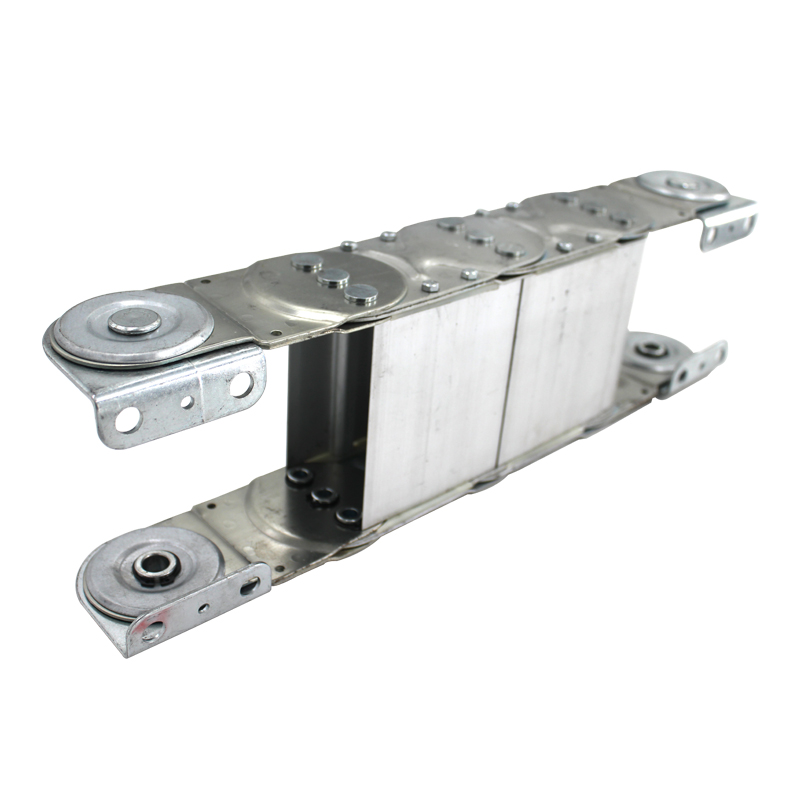chip conveyor types
Understanding Chip Conveyor Types A Comprehensive Overview
In modern manufacturing and machining processes, the effective management of metalworking chips is crucial for maintaining efficiency and ensuring safety. High volumes of chips produced during machining operations can clutter workspaces, leading to potential hazards and operational inefficiencies. To address this issue, various types of chip conveyors have been developed. This article aims to explore the different types of chip conveyors, their functions, and their applications across various industries.
What is a Chip Conveyor?
A chip conveyor is a mechanical device designed to collect, transport, and remove metal chips and shavings generated during machining operations. These conveyors play a pivotal role in keeping the workspace clean and organized, thereby minimizing the risk of accidents and ensuring smooth production flow. The right type of chip conveyor can dramatically improve operational efficiency, reduce downtime, and enhance the lifespan of machinery.
Types of Chip Conveyors
1. Drag Chain Conveyors Drag chain conveyors utilize a series of linked chains to move metal chips along a track. They are particularly effective for transporting heavy, bulky chips produced by machining processes, such as milling and turning. Their robust design ensures durability under harsh conditions and minimizes chip entanglement.
2. Auger Conveyors Also known as screw conveyors, auger conveyors employ a rotating screw mechanism to move chips along a trough. This type of conveyor is ideal for handling fine chips and small shavings, especially in applications where space is limited. Auger conveyors are highly versatile and can be configured for different angles and lengths to fit specific workflow requirements.
3. Belt Conveyors Belt conveyors consist of a continuous belt that runs over pulleys to transport chips. These conveyors are suitable for moving large quantities of smaller chips and can be easily integrated into existing production lines. They are commonly used in industries where speed and mobility are essential, as they can cover considerable distances without interruption.
chip conveyor types

4. Magnetic Chip Conveyors Magnetic chip conveyors utilize powerful magnets to attract and transport ferrous chips. These conveyors are efficient for capturing small metal particles that might otherwise be overlooked by traditional systems. Magnetic conveyors are often used in applications where precision is necessary, helping to maintain hygiene and preventing contamination of the machine and surrounding areas.
5. Vibrating Chip Conveyors Vibrating conveyors operate by utilizing a vibration mechanism to move chips along a trough. This type of conveyor is particularly effective for fragmented or irregularly shaped chips that may not be easily handled by other systems. Their gentle handling mode reduces the risk of chip damage, making them ideal for industries engaged in precision machining.
6. Flexible Chip Conveyors Flexible chip conveyors offer unique advantages due to their modular design. They can bend and curve to fit various layouts, making them ideal for smaller machine shops or confined spaces. These conveyors can also adapt to changing production needs and different chip types, providing operational flexibility.
Considerations for Choosing a Chip Conveyor
When selecting a chip conveyor, several factors must be considered
- Type of Chips Different conveyors are better suited for specific chip shapes and sizes. Understanding the type of chips produced in your operations will help in selecting the appropriate conveyor. - Space Availability The layout of your facility will influence the type of conveyor that fits best. For tight spaces, flexible or auger conveyors may be more effective. - Material Handling Needs Considerations about weight, volume, and chip material (ferrous or non-ferrous) will affect the choice of conveyor. - Cost and Maintenance Budget constraints and the required maintenance for different types of conveyors should be assessed to ensure a good return on investment.
Conclusion
Chip conveyors play a critical role in optimizing the efficiency of machining processes and maintaining a safe working environment. By understanding the various types of chip conveyors and their respective applications, manufacturers can make informed decisions that will improve workflow, reduce downtime, and ultimately enhance productivity. As technology continues to advance, we can expect further innovations in chip conveyor systems that will better address the evolving needs of the manufacturing industry.








